i bc27f85be50b71b1 (225 page)
Read i bc27f85be50b71b1 Online
Authors: Unknown

cose metabolism and the prevention of further second ary d iabetic
complications help to justify the increased risk H However, graft
survival after SKP transplant is higher than graft survival after
solitary pancreas transplantation, because renal allograft rejection
is easier to detect.
Cardiac Transplantation
Candidates for heart transplantation have irreversible end -stage
card iac d isease, no other surgical or medical options, and a poor
prognosis for survival longer than 6 months.' Patients typically
present with low exercise tolerance, cachexia, generalized w eakness, d ecreased muscle mass, marginal blood pressure, dyspnea, and poor peripheral perfusion.'7
Common indications for heart transplants include the
following'·'·2J :
• Card iomyopathy
• Severe left ventricular d isease (ejection fraction less than 20%)
• Ischemic heart disease
• Congenital heart disease
• Valvular d isease
• Inop erable coronary artery disease, with angina refractory to
med ical management
• Malignant ventricular dysrhythmias unresponsive to medical or
surgical therapy, or both
• Primary card iac tumors with no evid ence of spread to other systems
Contraind ications to cardiac transplantation include the
followi ng 5.12.21.21:
• Fixed pulmonary hypertension
• Unresolved pulmonary infarction

722
ACUTE CARE HANDBOOK FOR I'HYSICAL THERAPISTS
• Active peptic ulcer disease
• Type 1 diabetes mellitus with secondary complications
• Chronic obstructive pulmonary disease (COPD) with an FEV,
of less than 50%
Orthotopic and Heterotopic Heart TransplantatiOlI
OrthotOpic and heterotopic transplantation are the twO types of heart
transplant procedures. The more common orthoropic procedure
involves a median sternotomy with removal of the recipient's heart
(with the exception of the posterior right atrium with sinoatrial node,
left atrium, aorta, and pulmonary artery) and the inserrion of the
donor heart in the normal anatomic position.5,IO,38.39
In a heterotopic or " piggy-back" transplantation, the diseased
heart is left intact, and the donor heart is placed in the tight side of
the thorax adjacent ro the native heart with anastomosis between the
twO hearts. The purpose of the heterotOpic transplant is for the donor
heart to assist the failing heart. The donor left ventricle supports most
of the systemic circulation, and the native right ventricle supports the
pulmonary circuiation, I3 The heteroropic transplant recipient has twO
distinct electroc ardiograms with different hearr rates.13 Heterotopic
transplantation is rare, bur it may be used in cases in which there is a
size mismatch between the donor and recipient hearts or the recipient
has moderate to severe pulmonary hypertension.5,11.39
Whether orthotopic or heterotopic heart transplantation is performed , epicardial pacing wires and mediastinal and pleural chest tubes are inserted before closute of the chest wall (see Appendix III-A).
bldication of Cardiac Fllnction Post TraltSplant
Postoperatively, patients have a pulmonary artery catheter (that indirectly assesses left ventricular function and cardiac output) and an arterial line (that monitors peripheral arterial pressure) for hemodynamic monimring. Immediately after surgery, the patient'S complete blood count, arterial blood gas, serum elec trolyte, metabolic functions , and cyclosporine levels are monitored closely,S In addition , an echocardiogram is performed immediately posroperatively to evaluate
heart function and left ventricular ejec tion fraction. Pulmonary artery





ORGAN TRANSPLANTATION
723
pressures and fluid balance are monitored closelyS Depending on the
hemodynamic values, lab values, and ejection fraction, pharmacologic agents and mechanical support are initiated or weaned. Heart rate and rhythm disturbances are treated pharmacologically or by use
of epicardial pacing wires.
The new heart takes a few days to achieve a stable intrinsic
rhythm.ll Isoproterenol hydrochloride is typically used for its inotropic and chronotropic effects. The inotropic effect of the drug decreases the peripheral vascular resistance (PVR) and systemic vascular resistance, thus assisting the recovery of the donor heart.22 The chronotropic effect increases the heart rare and is typically required
for the first 3 postoperative days to increase preload and cardiac output and maintain a heart rate of approximately 110 beats per minute." ·ll Systolic blood pressure should be maintained at 90-110
mm Hg, with afterload reduction agents, such as nitroglycerin, to
help reduce rhe PVR.' Sometimes an intra-aortic balloon pump
(IABP) must be used to decrease afterload.'
Sinus node dysfunction, resulting from donor heart ischemia, atrial
stretch, or intraoperative rrauma, may calise a slow junctional
rhythm. It is treated with bipolar atrial pacing or with a chronotropic
drug, such as dobutamine.' Ideally, the heart rate should be maintained at 90 to 1 10 bears per minute to optimize cardiac output.' Cardiac function usually returns to normal within 3 to 4 days, at which rime intravenous medications, mechanical suppOrt, and pacing mechanisms are weaned.5
Postoperative Care and Complications
Immediate postoperative care for cardiac transplant recipients is similar to rhat of patients who have undergone cardiothoracic surgery.
Chest rubes are typically removed 2 days postoperatively once chest
drainage is less than 25 ml per hour, and pacing wire are removed 7
days after transplantation if there were no events of bradycardia.'
During the early hours after the transplant, the patient may manifest a variable global myocardial depression.' This may result from prolonged administration of high levels of vasopressors, an eleva red
PVR in the recipient, or a prolonged ischemic time.s Ischemic rime is
rhe rime from the cross-clamp of the donor organ to the removal of
the recipient'S new heart from cardiopulmonary bypass.ll Ideally, the
ischemic time for a hearr transplant should be less than 6 hours'

